Recent Posts
The Importance of Creating an Emergency Plan for Your Business | SERVPRO of Northwest Las Vegas
1/15/2025 (Permalink)
 Call SERVPRO of Northwest Las Vegas to help your business prepare for disaster with an updated ERP!
Call SERVPRO of Northwest Las Vegas to help your business prepare for disaster with an updated ERP!
Emergencies can strike at any time, and when they do, the impact on your business can be devastating. From natural disasters to unexpected accidents, having a solid emergency plan is crucial for protecting your assets, employees, and operations. At SERVPRO of Northwest Las Vegas, we understand the significance of being prepared. Let's dive into why creating an emergency plan for your business is essential and how you can get started.
Why Every Business Needs an Emergency Plan
Safeguard Your Employees
Your employees are your most valuable asset. In the event of an emergency, their safety should be your top priority. An emergency plan provides clear instructions on how to react in different scenarios, ensuring everyone knows the safest evacuation routes, assembly points, and emergency contacts. This preparedness not only protects your team but also fosters a sense of security and confidence among your staff.
Minimize Business Interruptions
Every minute your business is down during an emergency can translate into significant financial losses. A well-crafted emergency plan helps you minimize disruptions by outlining procedures for maintaining critical operations. Whether it’s a temporary relocation plan, data backup solutions, or a communication strategy, being prepared allows you to resume normal business activities as quickly as possible.
Enhance Your Reputation
Customers and clients value reliability. Demonstrating that your business is prepared for emergencies enhances your reputation and builds trust. Clients will appreciate knowing that you have measures in place to continue providing services even in challenging situations. Additionally, a good emergency plan showcases your commitment to safety and responsibility, further solidifying your brand’s image.
Steps to Creating an Effective Emergency Plan
Assess Potential Risks
Start by identifying the most likely emergencies that could impact your business. Consider natural disasters common to your area, as well as other risks like fires and power outages. Understanding these risks allows you to tailor your emergency plan to address specific scenarios.
Develop Clear Procedures
Outline step-by-step procedures for different types of emergencies. This includes evacuation plans, communication strategies, and protocols for maintaining critical operations. Make sure these procedures are easy to understand and accessible to all employees.
Train Your Employees
Regular training sessions are crucial to ensure everyone knows their roles and responsibilities during an emergency. Conduct drills and provide resources that keep emergency procedures top of mind.
Review and Update Regularly
An emergency plan is not a one-time task. Regularly review and update your plan to account for new risks, changes in your business, and feedback from drills. Keeping your plan current ensures its effectiveness when it’s needed most.
At SERVPRO of Northwest Las Vegas, we’re Here to Help® you develop and implement a robust emergency plan tailored to your business needs. Contact us today to learn more about our comprehensive emergency planning and our around the clock restoration services. Your business’s future depends on it!
We are Here to Help® you plan and to put things back together quickly after a disaster strikes. Contact us and keep business going.
Fall and Winter Fire Safety Tips for Your Home and Business | SERVPRO of Northwest Las Vegas
10/15/2024 (Permalink)
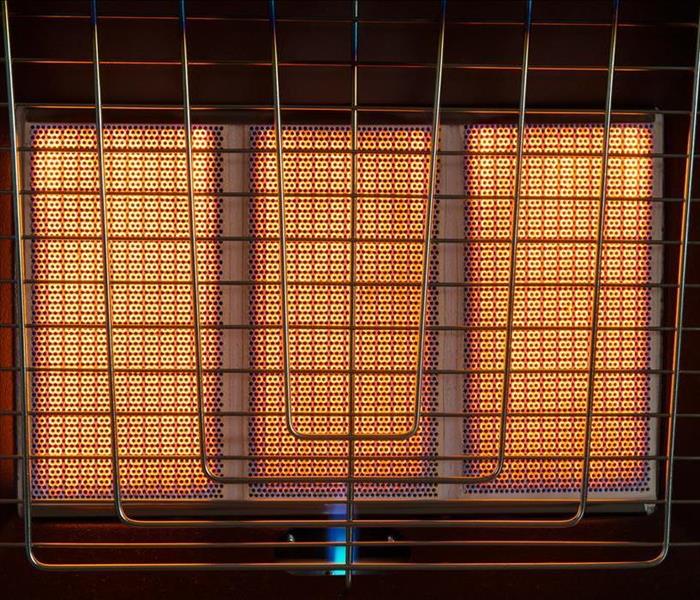 If you experience a fire, call SERVPRO of Northwest Las Vegas for a faster recovery.
If you experience a fire, call SERVPRO of Northwest Las Vegas for a faster recovery.
As the weather cools down and we start to spend more time indoors, it's essential to stay mindful of fire safety. SERVPRO of Northwest Las Vegas is here to help you keep your home and business safe during the fall and winter months. Here are some practical tips to ensure a fire-free season.
Stay Safe with Heating Equipment
As temperatures drop, heating equipment becomes a household staple. Whether you use a fireplace, space heater, or central heating system, it's crucial to use them safely.
- Inspect Heating Systems: Before you start using your heating system, have it inspected and cleaned by a professional. This ensures everything is functioning correctly and efficiently.
- Keep Flammable Items Away: Maintain a safe distance between heating equipment and flammable items. This includes furniture, curtains, and bedding.
- Use Space Heaters Wisely: Place space heaters on a flat, stable surface and avoid using them in high-traffic areas to prevent accidents. Always turn them off before leaving the room or going to bed.
Get Cozy Safely
This time of the year is the perfect time to make our homes feel cozy. If you have a fireplace, a fire can make your home feel warm and inviting. Holiday decorations are another way we can invite in the changing seasons—but with both of these you will need to stay fire-safe.
- Clean and Cover Your Fireplace: Regardless of what kind of fireplace you have it is important to keep it clean and free of dust. If your home has a chimney, make sure it is inspected yearly. Make sure your fire is covered as well, even if you use an electric or gas fireplace.
- Keep Decorations Safe: Keep decorations away from heating sources, and be sure not to overload your outlets. Keep any trees or other live plants you bring in for the holidays watered to prevent them from drying out.
- Use Candles Wisely: Candles are another popular way to make our homes feel cozy during the fall and winter. Always stay close when you burn one, or consider only using battery-operated candles to prevent accidents.
Kitchen Safety
The kitchen is the heart of the home, especially during the holidays. However, it's also a common place for fires to start.
- Stay in the Kitchen: Never leave cooking food unattended. If you need to step away, turn off the stove or oven.
- Keep Flammable Items Away from the Stove: This includes dish towels, oven mitts, and food packaging.
- Be Prepared: Keep a fire extinguisher nearby and ensure everyone in your household knows how to use it.
Smoke Alarms and Fire Extinguishers
Properly functioning smoke alarms and fire extinguishers are your first line of defense against fires.
- Test Smoke Alarms Monthly: Ensure they are working correctly and replace batteries at least once a year.
- Install Smoke Alarms: Place them on every level of your home, inside bedrooms, and outside sleeping areas.
- Check Fire Extinguishers: Make sure they are easily accessible and that everyone knows where they are located.
Plan and Practice Your Escape
In case of a fire, having a plan can save lives.
- Create an Escape Plan: Develop a fire escape plan with at least two ways out of every room.
- Practice Regularly: Conduct fire drills at least twice a year to ensure everyone knows what to do in an emergency.
By following these tips from SERVPRO of Northwest Las Vegas, you can help keep your home and business safe during the fall and winter months. Stay safe and enjoy the season!
Fires can still happen, even when you are prepared. Contact us to handle smoke, soot or any other damage in your home fast.
How to Protect Your Property from Flash Floods This Summer | SERVPRO of Northwest Las Vegas
8/12/2024 (Permalink)
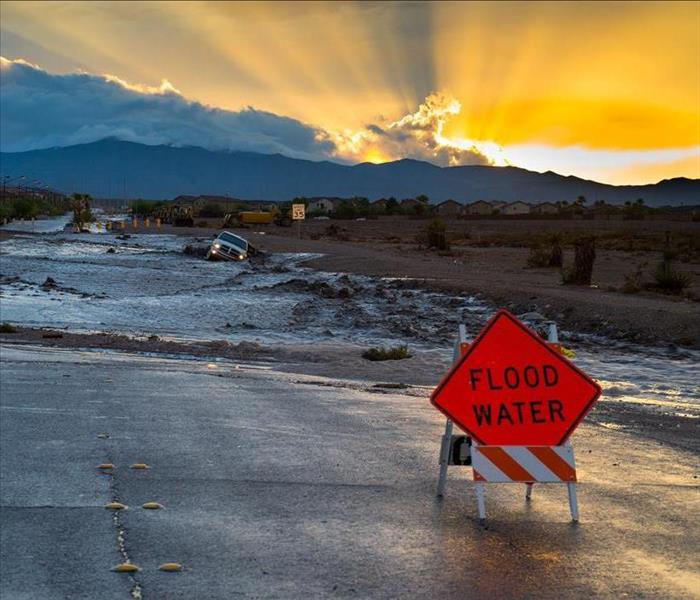 When the flood waters clear, call SERVPRO of Northwest Las Vegas to restore your home or business!
When the flood waters clear, call SERVPRO of Northwest Las Vegas to restore your home or business!
Understanding the Risk of Flash Floods
Summer in Northwest Las Vegas can be beautiful, but it also brings the risk of flash floods. Flash floods can occur with little warning, turning a dry creek into a raging torrent in minutes. Homeowners and small business owners need to be prepared to protect their properties from potential water damage. Here’s how you can safeguard your home or business from flash floods this summer.
Create a Flood Emergency Plan
The first step in protecting your property is to have a flood emergency plan. This plan should include:
- An evacuation route: Know the quickest and safest route to higher ground.
- A communication plan: Ensure everyone in your household or business knows how to reach each other and where to meet if separated.
- Emergency supplies: Stock up on essentials like water, non-perishable food, medications, and a first aid kit.
By having a plan in place, you can act quickly and efficiently if a flash flood warning is issued.
Make Some Investments
There are a few investments you can make that will protect your property from flash floods and heavy rains. Barriers are an effective choice when you have time to prepare. There are several kinds of barriers available too, including ones that are activated by the water of the flood.
You can also ensure that your home or office is well sealed as another effective way to keep water out. Check your windows, doors and basement regularly to ensure caulking or other weather stripping has not deteriorated.
A sump pump in the lowest level of your home can be a solid investment as well. Make sure you have a backup battery for your pump so that water can be continually removed even if the power is out.
Investing in these preventative measures can save you from costly repairs later.
Maintain Proper Drainage
Proper drainage around your property is crucial in preventing flood damage. Here are some tips to ensure effective drainage:
- Clean gutters and downspouts: Regularly clear debris from gutters and downspouts to ensure water flows away from your property.
- Grade your lawn: Ensure the ground slopes away from your home or business to prevent water from pooling near the foundation.
- Install French drains: These underground drainage systems can help redirect water away from your property.
Regular maintenance can make a significant difference in how well your property handles heavy rainfall.
Know Your Insurance Options
Flood damage can be costly, so it’s essential to have the right insurance coverage. Standard homeowner’s insurance typically doesn’t cover flood damage, so you may need to purchase a separate flood insurance policy. Review your current policy and consider adding flood coverage to protect your investment.
Call SERVPRO of Northwest Las Vegas
When disaster strikes, you need a reliable partner to help you recover. SERVPRO of Northwest Las Vegas specializes in water damage restoration, ensuring your home or business is returned to its pre-flood condition quickly and efficiently. Our team is available 24/7 to provide expert support when you need it most.
By taking these proactive steps, you can protect your property from the unpredictable nature of flash floods. Stay safe this summer, and remember that SERVPRO of Northwest Las Vegas is here to help you weather any storm.
Ready to get your home or office dried up quickly? Contact us and get back to normal fast.
Staying Safe and Dry During a Flood | SERVPRO of Northwest Las Vegas
5/21/2024 (Permalink)
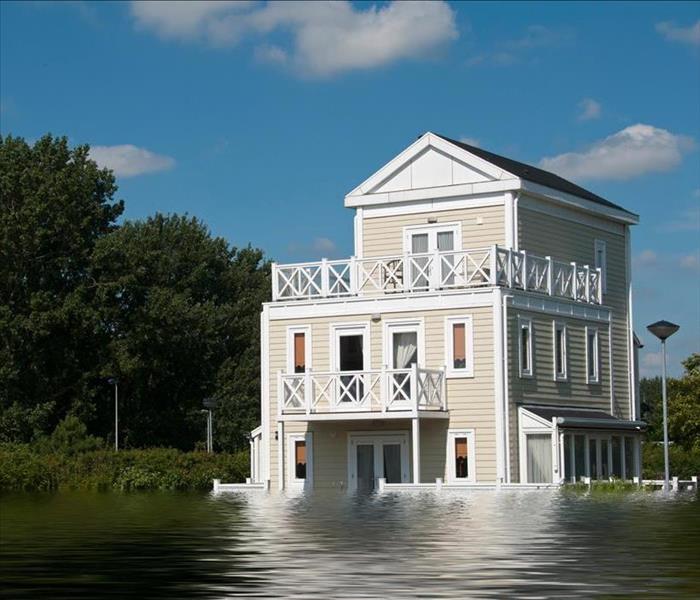 Flash floods come at the most unexpected times. Are you dealing with the aftermath? SERVPRO of Northwest Las Vegas is here to help! Call us now.
Flash floods come at the most unexpected times. Are you dealing with the aftermath? SERVPRO of Northwest Las Vegas is here to help! Call us now.
We don’t see much rain around here on a regular basis, but when we do, flash flooding conditions can appear quickly. Our dry, arid ground can have a harder time absorbing a lot of rain in a short amount of time, and it can back up and start to flow down our streets and into our homes as a result.
Knowing what to do before, during and after a flood can help you navigate these disasters more smoothly. Let’s chat about some flood safety strategies below!
Preparation Tips
The best way to prevent serious damage from occurring is to prepare your home and property for the incoming rain. Cleaning up your yard and pulling children’s toys, yard equipment and any other clutter into your garage can prevent it all from being swept away.
You should also take the time to tie down patio furniture, propane tanks or grills that are too heavy to move but that could still be impacted by the flowing water.
Check on your gutters and downspouts to make sure they are clear and pointed away from your house, and then head inside to prepare your home. If you know that your basement floods often when it rains, move any fragile possessions or important documents up to a higher level and consider shutting off electricity down there for the time being.
Locate your emergency kit, and be sure you have at least one reliable way of receiving weather alerts that doesn’t require electricity to work.
When the Water Starts Flowing
If your home starts becoming infiltrated with water, try to stay calm and stay in a safe location. It can be scary to watch water seep into your basement or leak down your walls, but it is important to remember that the storm will eventually move on and the water will stop rushing in.
Once the storm passes on, be really careful moving about your house. Flowing water is really strong and could have caused damage to your home that you can’t see at the moment.
Wear sturdy boots and gloves if you have to walk through the water. Floodwater can be toxic or could be harboring sharp objects or chemicals, so try to stay out of it as much as you can. Now is the time to get us on the phone!
How We Can Assist You
Our team understands that water damage should be dealt with quickly and efficiently, so we will get started on your restoration as fast as possible. The longer the standing water sits in your home, the worse your damage could get and the risk for mold growth increases.
We will extract the standing water and use our thermal cameras to detect residual moisture. Once your space is dry, we can locate the source of the leak and address specialized repairs.
Water can easily warp floors, ruin carpet and create soggy walls, so we will also tackle these restoration jobs while we work. When we are done, your home will be dry and returned to its pre-flood condition.
Flood water can cause extensive damage. Contact SERVPRO of Northwest Las Vegas right away.
When Disaster Strikes Your Business, We Step Up | SERVPRO of Northwest Vegas
2/21/2024 (Permalink)
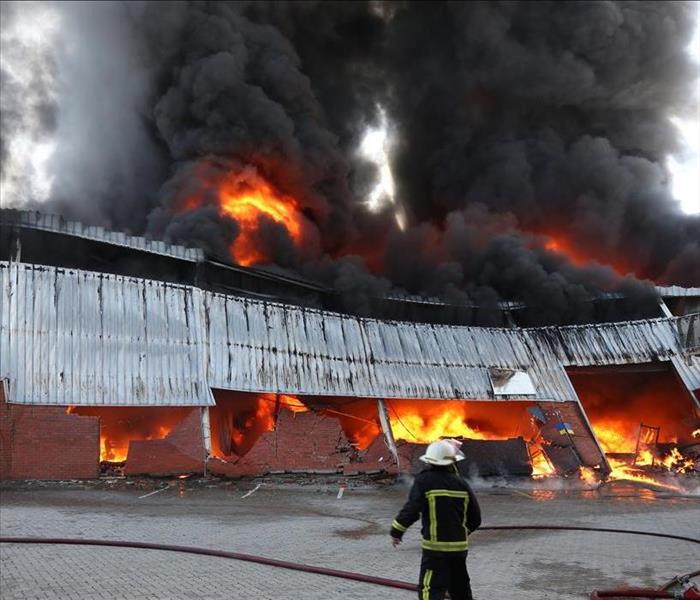 When disaster strikes your business, the aftermath can feel overwhelming. Call SERVPRO of Northwest Vegas today. We are here to help!
When disaster strikes your business, the aftermath can feel overwhelming. Call SERVPRO of Northwest Vegas today. We are here to help!
You put a lot of your time, effort and passion into running a successful business in the Las Vegas community, and it sure shows! We have so many great restaurants, entertainment venues, arts opportunities and commercial properties in the area, and we have you to thank for that.
We also know that it can be a ton of work to run a business. Dealing with the daily schedules, managing employees and planning for disasters can be a lot, and sometimes it can just be simply overwhelming. Thankfully, our team is here to ensure you don’t have to do everything yourself. We proudly offer our restoration and cleaning services to our local businesses and commercial properties.
Our Restoration Services
While you may have a plan in place for dealing with disasters, they can still take you by surprise and leave you with serious damage to your property. A catastrophic warehouse fire, impact damage from a fallen tree or even a busted water line that was left to leak overnight can leave you with extensive damage and some really important decisions to make.
Our team can help you recover no matter how destructive or extensive the damage is. We have a large-loss recovery team that will handle your entire restoration from the initial planning all the way through to the final repairs.
We know that every minute during an unexpected closure can have serious effects on the success of your business now and in the future, so we work hard to be as efficient as possible during this process.
Our Specialty Cleaning Services
We would assume that your cleaning responsibilities may not be your favorite part of owning a business, which is why you rely on your janitorial staff to help you along the way. However, your custodians may not have the tools and equipment to tackle every cleaning job that you have. Our commercial cleaning crew can help you with those more specialized cleanings.
We can handle anything from deep carpet cleanings to odor removal and everything. When was the last time you had your air ducts cleaned? We can handle that, too. Our goal is to help keep your business clean so you can focus on other important tasks.
Cleaning Up Biohazards
Planning for disasters is one thing, but planning for the unexpected or emergencies is entirely another. Suffering a crime at your business or discovering a sewage leak may be overwhelming, but it can also be dangerous.
Biohazard substances should always be cleaned up by a professional because they can be dangerous or even toxic to handle without the proper training and safety gear.
Our team will take care of everything from start to finish so you stay safe the entire way through. Animal waste and remains, hoarding situations, crime scene residue, bloodborne pathogens and sewage leaks are just some of the situations we are trained to handle. When the unexpected happens and you are left with a dangerous situation, give us a call.
What are you waiting for? Schedule one of our commercial services at SERVPRO of Northwest Vegas today.
Where Is That Water Leak Coming From? | SERVPRO of Northwest Las Vegas
11/21/2023 (Permalink)
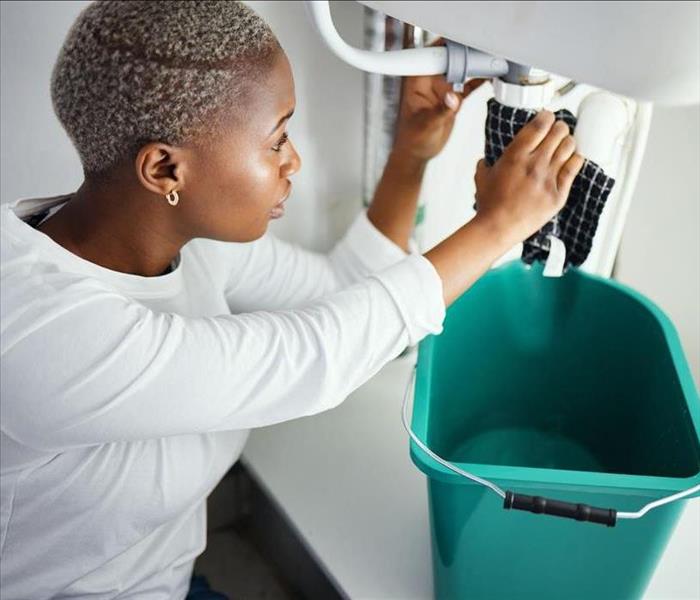 Has a leaky appliance left water damage to your home? SERVPRO of Northwest Las Vegas is here to restore your space. Contact us today!
Has a leaky appliance left water damage to your home? SERVPRO of Northwest Las Vegas is here to restore your space. Contact us today!
Water leaks can be really stubborn sometimes and can be hard to track down! One minute your home is running smoothly and you don’t have a care in the world, and then all of a sudden you are glancing up at your ceiling and notice a water spot or walk into your kitchen only for your socks to get soaked through.
A single dripping pipe or a malfunctioning appliance could be the culprit, but first you have to figure out where the water is coming from. Follow along as we explain some of the more common places for water leaks to occur and what to do when you do discover the source of the leak.
Where Water Leaks Often Start
A leak can start anywhere that you have water flowing through your home. Pipes are constantly moving water around behind your walls and a single worn water line or deteriorated seal can be enough for a serious leak to occur. Check the pipes and lines that are easily visible around your toilets, sinks and tubs for signs of moisture.
Another common location for leaks is around your appliances. We rely on our trusty appliances like dishwashers, washing machines and water heaters to help us get through our days, but they can also leak at any time and leave behind a water disaster, and probably dishes or clothes that are still dirty.
Checking your appliances regularly before you use them can help alert you to any developing situation, and you should also make sure you are performing any routine maintenance that can prevent these issues from actually occurring.
Controlling the Situation
If you have pinpointed the room or area of your house where the leak is originating, start opening cupboards, feeling walls and checking all water connections in the room. Once you locate the source of the leak, shut off the appropriate water valve to stop the flow of water and shut off the appliance at fault to ensure it can’t start back up again.
Once the situation is partially under control, it’s time to get us on the phone. Our team understands the time-sensitive nature of water disasters, and we will work quickly to prevent mildew or mold growth from taking hold. You should also take some pictures of any damage that you see.
The Drying Process
We will quickly identify the source of the leak and address repairs while also getting started on the water extraction process. We have industry-leading drying equipment that will pull water from every part of your space, including behind your walls or under your floor.
Once your space is clean and dry, we will tackle any water damage that was caused by the standing water. Water is known to warp wood, sag floors and ruin drywall, but we can help you recover from anything.
A fast water restoration can help you avoid mold growth and structural issues. Contact SERVPRO of Northwest Las Vegas today.
Battling the Elements: How to Prepare for High Winds and Protect Your Home
6/18/2023 (Permalink)
High winds can be a force of nature that pose significant risks to both personal safety and property. Preparing for high winds is crucial to mitigate potential damage and ensure your well-being during such weather events. In this blog post, we will discuss essential tips and strategies to help you effectively prepare for high winds, empowering you to protect yourself, your home, and your surroundings.
Stay Informed and Monitor Weather Updates
Stay informed about weather conditions by regularly monitoring weather forecasts and updates from reliable sources. Pay attention to alerts and warnings related to high winds issued by meteorological agencies. Being well-informed allows you to take timely action and make necessary preparations.
Secure Outdoor Objects
Inspect your surroundings and identify objects that may become projectiles in high winds. Secure or store away outdoor furniture, umbrellas, grills, garden tools, and other loose items that could be picked up and tossed around. Trim or remove weak tree branches that could potentially break and cause damage.
Reinforce Doors and Windows
Ensure that your doors and windows are properly reinforced to withstand high winds. Install storm shutters or use impact-resistant window film to protect glass surfaces from shattering. Reinforce doors with sturdy deadbolts and install heavy-duty hinges to prevent them from being blown open.
Strengthen Roofing and Siding
Regularly inspect your roof and siding to identify any loose or damaged areas. Repair or replace loose shingles, tiles, or panels to ensure they are securely fastened. Consider reinforcing vulnerable areas with metal strapping or clips. Reinforce garage doors to prevent them from collapsing under high wind pressure. If you have outdoor structures such as sheds, gazebos, or playsets, ensure they are properly anchored to the ground. Use ground anchors or tie-downs to secure them firmly. Reinforce connections and structural components to improve their resistance to high winds.
Trim and Maintain Trees and Vegetation
Maintain trees and vegetation around your property to reduce the risk of falling branches and uprooted trees during high winds. Regularly trim branches that are close to your home or power lines. Remove dead or weak trees that may pose a significant hazard during severe weather events.
Prepare an Emergency Kit
Assemble an emergency kit that includes essential supplies to sustain you and your family in the event of high winds or related power outages. Include items such as non-perishable food, drinking water, flashlights, batteries, a first aid kit, blankets, and a portable weather radio. Ensure the kit is easily accessible and kept in a secure location.
Create an Evacuation Plan
Develop an evacuation plan in case high winds escalate to a severe level or if local authorities issue evacuation orders. Identify evacuation routes, establish a meeting point for your family, and ensure everyone understands the plan. Keep important documents and contact information readily available to take with you if you need to evacuate.
Preparing for high winds requires proactive measures and careful planning to protect yourself and your property. By staying informed, securing outdoor objects, reinforcing doors and windows, strengthening roofing and siding, anchoring outdoor structures, maintaining trees and vegetation, preparing an emergency kit, and creating an evacuation plan, you can enhance your readiness and safety during high-wind events. Remember, personal safety should always be the top priority. If the situation becomes severe, follow the guidance of local authorities and seek shelter in designated areas.
The Top 5 Most Common Types of Mold Found in Homes: A Guide for Homeowners
5/8/2023 (Permalink)
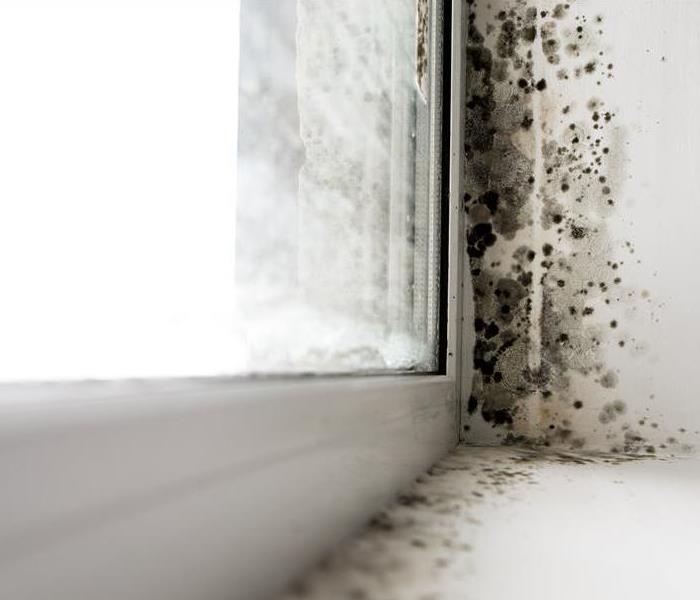 Being aware of mold in your home and business is essential to maintain a clean environment.
Being aware of mold in your home and business is essential to maintain a clean environment.
When it comes to maintaining a healthy home, it is important to be aware of any potential mold growth. Mold is a type of fungus that can grow in damp or humid areas, and it can cause damage to your home if not addressed properly. We will focus solely on the most common types of mold found in a home.
Alternaria
Alternaria is a type of mold that is commonly found in damp areas such as bathrooms and kitchens. It can grow on a variety of surfaces, including shower curtains, tiles, and wallpaper. Alternaria is typically dark in color and has a velvety texture. While it is not typically harmful to humans, it can cause allergic reactions in some individuals.
Aspergillus
Aspergillus is a type of mold that is commonly found in homes with poor ventilation. It can grow on a variety of surfaces, including walls, floors, and furniture. Aspergillus is typically green in color and has a powdery texture.
Cladosporium
Cladosporium is a type of mold that is commonly found in damp areas such as basements and bathrooms. It can grow on a variety of surfaces, including walls, floors, and furniture. Cladosporium is typically black or dark green in color and has a powdery texture.
Penicillium
Penicillium is a type of mold that is commonly found in homes with high humidity levels. It can grow on a variety of surfaces, including walls, floors, and furniture.
Stachybotrys
Stachybotrys is a type of mold that is commonly found in homes with water damage. It can grow on a variety of surfaces, including walls, floors, and furniture. Stachybotrys is typically black in color and has a slimy texture.
In conclusion, being aware of the most common types of mold found in a home can help you identify any potential mold growth and address it before it causes damage to your home. While it is important to be aware of any risks associated with mold exposure, this article focused solely on the most common types of mold found in a home.
Renters Insurance and Fire Damage: What You Need to Know
4/4/2023 (Permalink)
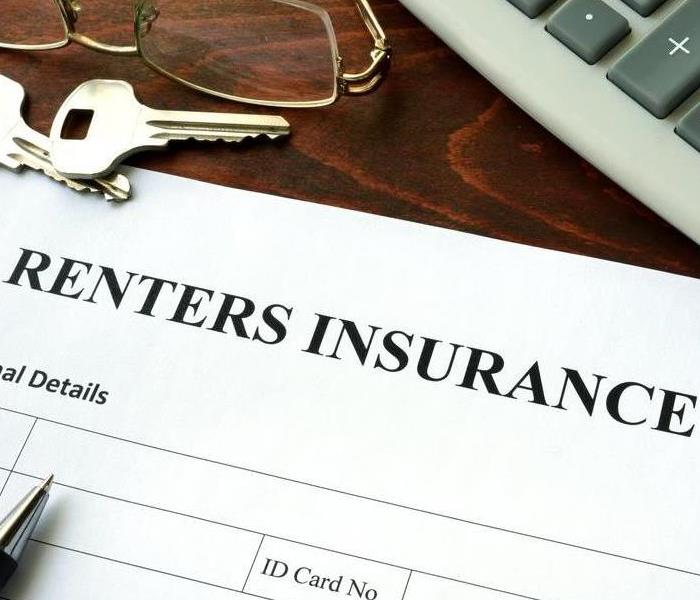 It is always good to have renters insurance incase of a fire emergency in your home.
It is always good to have renters insurance incase of a fire emergency in your home.
As a renter, it's important to have renters insurance to protect your personal belongings and cover any damages to the rental unit. One of the most common risks that renters face is fire damage. Therefore, it's important to understand whether renters insurance covers fire damage or not.
The short answer is yes, renters insurance generally covers fire damage. However, the coverage and amount of coverage can vary depending on your policy and insurance provider. Renters insurance typically has two types of coverage: personal property coverage and liability coverage.
Personal property coverage protects your personal belongings, such as clothing, electronics, and furniture, from damage caused by fire, theft, or other covered events. If your belongings are damaged or destroyed in a fire, your renters insurance policy will pay to repair or replace them up to the policy limit.
Liability coverage protects you if you're held responsible for damage to someone else's property or for injuries sustained by someone while on your rental property. For example, if you accidentally start a fire in your apartment that spreads to your neighbor's unit, your renters insurance policy may cover the damages to their property.
It's important to note that while renters insurance covers fire damage to your personal property and liability, it may not cover the physical structure of the rental unit itself. That's because the landlord is typically responsible for insuring the building and any structural damage caused by fire or other covered events.
Therefore, it's a good idea to check with your landlord and insurance provider to make sure you have adequate coverage in case of a fire. You may also want to consider additional coverage options, such as loss of use coverage, which covers the cost of temporary living expenses if your rental unit becomes uninhabitable due to fire damage.
In addition to having renters insurance, there are steps you can take to reduce the risk of fire damage in your rental unit. Some tips include:
Install smoke detectors: Make sure your rental unit has working smoke detectors in every room, and test them regularly.
Don't overload electrical outlets: Avoid using too many appliances or electronics on one outlet or extension cord, as it can cause an electrical fire.
Be careful with open flames: Don't leave candles, cigarettes, or other open flames unattended.
Keep flammable materials away from heat sources: Keep items like curtains, paper, and cleaning supplies away from heaters or other heat sources.
In conclusion, renters insurance typically covers fire damage to your personal property and liability, but may not cover the physical structure of the rental unit. It's important to have adequate coverage and take steps to prevent fire damage in your rental unit.
Pipe Break Plan
2/20/2023 (Permalink)
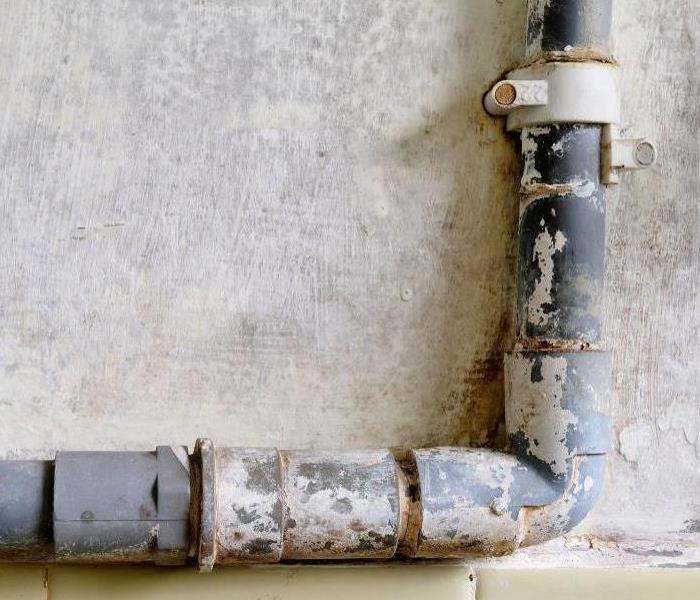 When water damage is present, give SERVPRO a call at the first sign of water damage.
When water damage is present, give SERVPRO a call at the first sign of water damage.
If your water pipe breaks, you have to do some quick thinking and action. Your first step should be calling your water service provider as soon as possible, but there are other steps you can take while you're waiting for them to arrive.
Call your water service provider.
The first thing you should do after a pipe has broken is call your water service provider. They will be able to tell you where the break occurred, as well as give an estimate for repairs. You can also ask if they have a 24 hour emergency service available and what it would cost to repair the pipe. In addition, ask them if they can provide temporary water supply until repairs are made or if there's another way around this problem (like getting access to another source).
Shut off the water supply to the broken pipe.
Shut off the water supply to the broken pipe. If you can't shut off the water supply, call your water service provider. Turn off the main valve. Turn off both handles on your faucet(s), then turn on another faucet in your house (to let air into pipes). After turning off the water supply open cabinets doors, under sinks or behind toilets until you find where your main valve is located.
Seal off the area to prevent further damage.
Seal off the area to prevent further damage. Use a wet/dry vacuum to remove excess water and a shop vac to suck up any remaining water in the pipe. Cover the area with plastic sheeting, then seal it with duct tape. This will help keep out airborne debris that could cause additional damage as well as protect your home from mold growth in case there's any moisture left behind inside of your walls or ceiling structure after everything has dried out completely
Remove any property that has been damaged by water.
Once you have identified the source of the leak, it's time to remove any property that has been damaged by water. Remove anything that is wet or has been damaged by water, including carpeting and drywall. Dry out the area as much as possible before removing anything else.
Remove any damaged items such as furniture or appliances and throw them out. If something is salvageable, put it in a safe place until repairs are complete. If there are spills on your flooring (such as food), clean them up immediately so they don't become permanent stains.
Water damage restoration professional
After a pipe break, the most important thing to do is get a water damage restoration company to clean up the mess. There are many things to consider when choosing a company and determining if they're right for your job. A good restoration company will offer a free estimate on how much it will cost to clean up your home or business after a flood or other water damage incident.
Experienced technicians who know what they're doing (and won't make any mistakes). It's tempting when hiring someone else because of how busy we all are these days--but remember that this is one area where saving money isn't worth risking quality results!
Give SERVPRO a call at the first sign of pipe break or water damage to your property. We are available to help 24/7 and provide experienced and knowledgeable technicians with the right equipment for any size water loss.





 24/7 Emergency Service
24/7 Emergency Service








